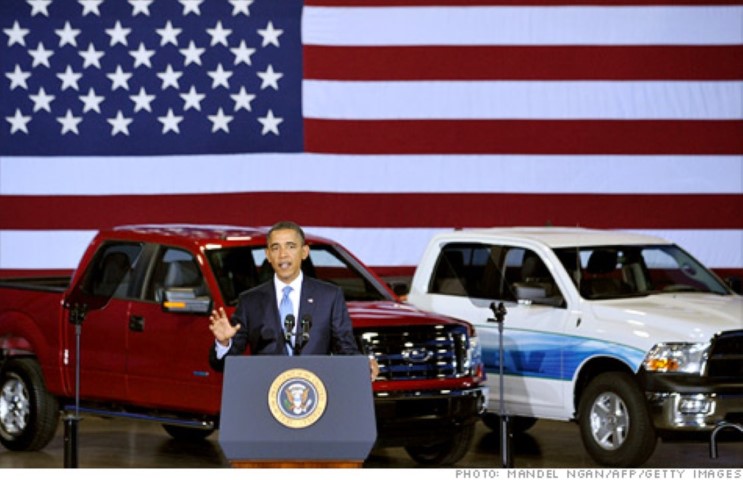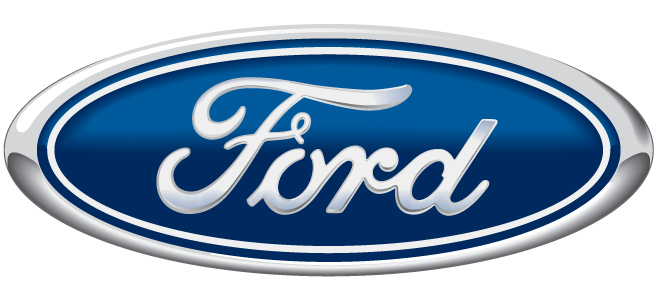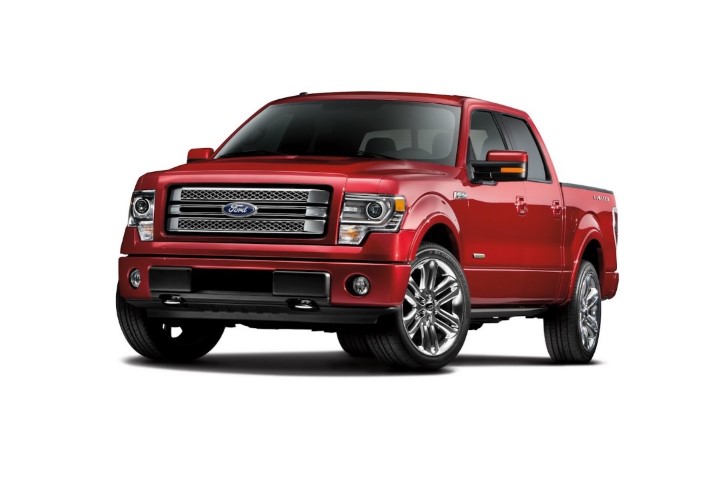Ford – a modern day Cinderella? Part 1
- Written by
- Published in News
- font size decrease font size increase font size
- Be the first to comment!

While, at time of writing, as the United States of America teeters on the edge of the so-called fiscal cliff, there are continued and justified fears that the U.S. will tumble into yet another recession. Naturally like a giant game of economic dominos, should the economy of the western world’s largest industrial nation even falter, then so too will Canada’s and much of the rest of the developed world in short order.
As gloomy as that may sound, it’s not as if this is the first time at this particular rodeo. In fact there have been as many as 47 recessions in the United States since 1790. Cycles in agriculture, consumption, business investment, and the health of the banking industry also contribute to these declines. U.S. recessions have increasingly affected economies on a worldwide scale, especially as countries' economies become more intertwined.
Now isn’t this a cheery way to start off a new year?
Let’s step back a few years to a time when, to many, the unthinkable (almost) happened.
The automotive industry crisis of 2008–2010 was a part of a global financial downturn. Although the crisis affected European and Asian automobile manufacturers, it was primarily felt in the North American automobile manufacturing industry. The downturn specifically affected Canada by virtue of the Automotive Products Trade Agreement.
Auto manufacturers were weakened by a substantial increase in the prices of automotive fuels linked to the 2003-2008 energy crisis which discouraged the purchase of less-economical sport utility vehicles (SUVs) and pickup trucks which generally have low to poor fuel economy.
The popularity and relatively high profit margins of these vehicles had encouraged the American ‘Big Three’ automakers, General Motors, Ford, and Chrysler to make them their primary focus. With fewer fuel-efficient models to offer to consumers, sales began to slide and by 2008, the situation had turned critical as the credit crunch placed pressure on the prices of raw materials.
Car companies the world over implemented creative marketing strategies to entice reluctant consumers to buy their product; most experienced double-digit percentage declines in sales. The Big Three faced constant criticism for their product lines which were seen to be irresponsible in light of rising fuel prices.
Almost overnight, North American consumers turned to smaller, cheaper and generally more fuel-efficient imports from Japan and Europe. However, many of the vehicles perceived to be foreign were actually ‘transplants’, foreign cars manufactured or assembled in the United States, at lower overall cost than true imports.
Thus began the slide down a slippery slope.
Manufacturers made 15% to 20% profit margin on an SUV, compared to 3% or less on a car. When gasoline prices rose above U.S. $4 per gallon in 2008, everyday consumers stopped buying gas-guzzling vehicles and the Big Three sales and profitability plummeted. With falling sales, the Big Three's North American plants were operating below capacity. GM's plants were operating at 85% in November 2005, well below the plants of its Asian competitors, and was only maintained by relying on cash incentives and subsidized leases. In almost desperation, manufacturers offered rebates, employee pricing, and 0% financing. While these incentives boosted sales, they significantly drained the automakers’ collective cash reserves.
Further, the subprime mortgage crisis and high oil prices of 2008 caused the popularity of once best-selling trucks and SUVs to rapidly decline. Automakers were forced to continue offering heavy incentives to help clear excess inventory. Due to the declining residual value of their vehicles, Chrysler and GM stopped offering leases on most of their vehicles in 2008.
Was the end in sight?
Ultimately, Chrysler and General Motors fell into bankruptcy. Chrysler filed for chapter 11 bankruptcy protection on May 1, 2009 followed by General Motors a month later.
There was one notable exception – Ford.
 Not only had Ford declined to participate in the ‘bail out’ of the North American auto industry, they quietly went about their business, doing whatever they could to shore up the systemic financial bleeding from their mighty worldwide organization’s bottom line. Tough decisions were made; economic concessions negotiated and agreed. They did, however, negotiate a secure line of credit of up to U.S. $9 billion as a form of bridge financing to enable them to continue to move forward, working a radical business plan with a view to returning this auto-maker to sustained profitability sooner than later.
Not only had Ford declined to participate in the ‘bail out’ of the North American auto industry, they quietly went about their business, doing whatever they could to shore up the systemic financial bleeding from their mighty worldwide organization’s bottom line. Tough decisions were made; economic concessions negotiated and agreed. They did, however, negotiate a secure line of credit of up to U.S. $9 billion as a form of bridge financing to enable them to continue to move forward, working a radical business plan with a view to returning this auto-maker to sustained profitability sooner than later.
And to what end?
 2012 is Ford’s best calendar year in quite some time. Light vehicle sales continue to climb and of course, the venerable F-150 product line is on track to be the number one selling light truck in Canada for the 47th consecutive year.
2012 is Ford’s best calendar year in quite some time. Light vehicle sales continue to climb and of course, the venerable F-150 product line is on track to be the number one selling light truck in Canada for the 47th consecutive year.
In the second part of this article, we’ll learn how this was accomplished – and at what cost.

